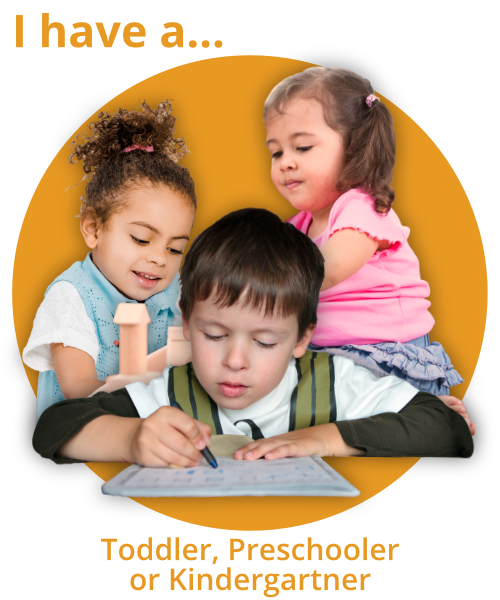Your Kitchen is a Classroom!
I'm Aubrey Hargis, Montessorian and mom of two, and we are homeschoolers. Our house is our school, the playground is our school. Grandma's house is our school, and whatever hotel we stay in when we're on vacation is our school! We school everywhere, and I am one of the students as well...because education is a journey we take with our children, and the opportunities for learning start over every day.
Hey Sweet Friend
This episode is a little bit special. We’re kicking off a mini-series here on the podcast! We are going to walk you through your Montessori prepared home room by room, specifically envisioning the role of each space in your homeschool. If you are not a full-time homeschooler that is okay! You're still going to learn a lot from this little mini-series. My children are 11 and 14 years old now, and we are still using our entire house to homeschool in different ways. If you’re taking this journey with me, feel free to get out a notebook and pen and jot down some notes, thoughts, and reminders!
I know that there is a lot of responsibility that we have as adult homeschoolers. We feel like we have to do all this preparation to provide our children the perfect educational environment. I hope that through this little series you see that that is just not true. Your home is good enough! Wherever you are is going to be great. You have what you need -- because the most important thing you can offer is carrying a sense of curiosity and joy yourself and looking for the unexpected. Today, we're going to get into that with the kitchen.
But first, if you're new here, I want to say a little warm welcome! I am Aubrey Hargis, and I teach Montessori courses online to parents all over the world. In just under a week, we kick off the Fall LIVE coaching for Homeschool of the Redwoods: Primary, for parents of children ages 2.5-6.
Meet Juli
Meet Juli, a Montessori mom of two, living in Florida, USA! She’s an alumna of Homeschool of the Redwoods Primary and Lower Elementary and a member of Constellation. You may recognize Juli from her Instagram account, where she talks about minimalist Montessori homeschool life. We are featuring members like Juli so you can get a sense of what it’s like to belong to the Montessori homeschooling community! You can read more about Juli and her family here.
How Do You Use Your Kitchen?
I think it's good to start by talking about how we use our kitchens. Some people say that the kitchen is like the heart of your home. In our house, that is pretty true! We spend a lot of time in the kitchen. You might not spend a lot of time in the kitchen--I imagine it depends on your needs, interests, and skills! I love cooking myself, and my children love my cooking. It's a big source of creativity for me, and so it's a place where I love to spend time.
It is also central to our home in that it is a place of nourishment for our bodies. It can also be a space that nourishes our intellect and our heart. Kitchens often become a gathering place. At parties, I always tend to end up gathering with people in the kitchen and just chatting and talking. My husband and I also love to gather in the kitchen and just chat in there with each other while we're preparing food. There's a lot of conversation and community that happens in our kitchen. So if those things that were the purpose of the kitchen, what does that mean for our educational environment?
Feeding the Intellect
If the kitchen is naturally already tending our physical needs and our social needs, we probably need to think next about bringing in more is that intellectual nourishment. Practically, this is the place where we end up doing a lot of our homeschool science experiments. I love that the counter is easy to clean up. I love that I don't have to we don't have to carry our stuff outside, or to the bathroom--we just use that kitchen sink! Sometimes we even do experiments in the kitchen sink, as long as everything is okay to be poured down the drain. It’s such a simple invitation: I just say “Come on over, step on the step stool, and we’ll get started here in the sink.”
It's also where we end up doing a lot of art. We don't do all of our art in the kitchen, but when my children were little especially, they loved color mixing. I would keep some food coloring or other ways to color water in the cabinet and often I’d take it down and put a few drops of food coloring in one little jar and a few drops of another primary color in another jar and then just sit it out on a little tray and see what happened! The kitchen is where we kept a lot of our trays, not all of them, but many of them! I would keep them in the kitchen along with the cookie sheets. Cookie sheets are great for experiments, but I tended not to use them as trays, because our cookie sheets tend to get kind of grimy!
I usually had three sizes of tray: I had one small size, about the size of half a sheet of paper, a medium-size tray, and a large tray, and kept inside the kitchen. My children got really good about using those trays, and they would just grab one whenever they wanted to do work that was a little messy or something that needed a little space designation. You know, like if you want someone else to know that this is your stuff, you use a tray or you use some kind of placemat just to make sure that everybody is really clear.
Nurturing Independence
I often kept some napkins in the kitchen--I made ours by hand! Sometimes we used those as placemats. I always kept them handy and allow my children to use them at will--to clean themselves or their space, to help define their space. My children had complete and free access, even when they were little, to all of our kitchen things except for the knives. When my children were little I hung one of those magnetic knife strips up in the top area of the kitchen. The kids know that they could access anything in the drawers, but not those big knives. Anything in those drawers was game for them to use. I had some boundaries around what needed to stay in the kitchen and what they could take out of the kitchen, but for the most part, it was very much free rein.
Our refrigerator was also always available. A lot of parents come to me with questions about how to manage snacks. When I had little children, at first I kind of toyed with the idea of getting specific containers for kid’s snacks and putting that in an area of the refrigerator. You might like that approach best here -- are the containers that contain the snacks that you can get any time you want, or that you can get between these hours of the day, or that you can get with permission, whatever your personal boundaries are. We probably started with that, but graduated very quickly to “everyone in our family can use the fridge.” When I ordered groceries, one of my first tasks was to prep stuff. So I would take all of our groceries and wash all of the veggies, cut them up into smaller bite-sized pieces, and put them into mason jars or little containers that my kids could open and close easily. We had a lot of those that my children could get in and out. Then, I had my fridge all organized with everything on display, so they could go in and look and say, “ah, we've got carrots, they're already prepared, and it's ready for me to use.”
This was a long-term approach, but it was worth it to me. I did spend a lot of time doing that kind of weekly prep, to make sure that everything was available for the kids. What it meant was that I could just turn them loose in there and I could trust that they would then engage with an environment in the way that they needed to. Then, my only job in the kitchen other than inspiring them by inviting them to cook with me was to just observe them and see if anything needed a little modification. Sometimes you might need to set up a new rule--if we start using the forks in an inappropriate way, or, or could potentially be harmful, I would supervise and talk to them about what was going on, and we would set a new boundary. For the most part, I wanted my children to have a lot of freedom in the kitchen, and they always have, they don't have any problem feeding themselves. They have never depended on me for their food needs, as long as they're supplied with enough food. I also admit that this comes with some privilege. I have the privilege to have time to do the prep work, the privilege to be able to keep the kitchen supplied with food and allow my children to eat whenever they're hungry. I know not every family can do that.
My children are involved in the meal preparation in our house; they don't always cook with me, but I always invite them to cook with me. When they were younger, especially, they seemed to go through these phases where they would be super interested in cooking, and super some phases where they were not at all interested. I just follow their lead with that.
Keeping it Practical
There is a ton of practical life work you can do in the kitchen. If you're brand new to Montessori, practical life is stuff like the household chores that we introduce children to when they're very, very little. It's very satisfying to them to participate in...they are not mandatory when children are little. It's usually an invitation to help or to be independent and do something for the family-- just for the sake of doing it, without worrying about the outcome. When you make all of your materials available as I mentioned before, it paves the way for allowing children to engage more deeply in that practical work, as opposed to needing you to get things for them, or needing to go to a shelf and get the items out. As opposed to having a practical life shelf somewhere, I just prepared the kitchen in a way that we all could function in it and find the things that we needed. For us, this meant keeping all of their dishes down low and the fridge ready for snacking.
Academics in the Kitchen
Math is something we did a lot of in the kitchen. My children learned how to follow recipes pretty easily, and practiced a lot as we doubled things or substituted ingredients. Math is such a natural part of cooking! We also did a lot of botany in the kitchen; chopping fruits and veggies to look at the seeds, maybe even trying to grow some seeds! We used the windowsill in our kitchen to grow all sorts of fun things. For biology, I like to keep things like sourdough alive and we did a lot of fermenting. All of that was fun, helping us to learn about botany and biology.
Our family is omnivorous--and we have found that there is no need to do formal dissection work with children because we're already doing it with food. We viscerally explore food that is both raw and food that is cooked. Of course, with little toddlers, if they are sticking their hands in their mouths keep good common sense around you. You know what is safe for your children to touch or what they're going to put in their mouths. You know when your children are old enough to understand the rules and how to thoroughly wash their hands after handling raw meat.
We did a lot of zoology right in the kitchen, both with animals in terms of preparing our food and also just in terms of thinking about bacteria that live in our bodies and our food as we talked about digestion. Additionally, for some reason, the kitchen was always the environment where when my children brought little creatures they found in the yard, whether it was a spider, or a little salamander, or a worm, those things always came into the kitchen and were contained and observed for a little while before we released them.
The Hub of Our Homeschool
The conversations that naturally happened in our kitchen were invaluable. Lots of common, natural “I wonder…” conversations happened in our kitchen. If I were going to look into my home and think about how preparing it for my child's learning, the kitchen is probably where I would start. It has played a big role in our homeschool!
So your little assignment today is to go into your kitchen and ask yourself:
What kind of things are we going to be doing in here?
How independent do I want my children to feel in this area of the house? (It's perfectly fine to set boundaries with things, like my children are still not allowed to turn on the stove.)
Assess where your child is and look around your kitchen and determine what your comfortable with your child using.
Think about what you need to make the space practical. Some people like to make little kitchens for their children! That is great. All we did in our kitchen was put a low toddler table down, just so that they didn't always have to be standing up at the counter. Stools, or we use chairs turned backward, help make those surfaces more accessible.
What do they need to clean up after themselves? A few small sponges in a little bowl with some water? A spray bottle and some cloths?
When our children were very, very little, we started with a lot of small modifications. Then as they grew older, we had fewer modifications and were able to focus more on inclusion and independence in the things that they were allowed to do with less supervision. That is the kind of work that we're doing in preparing the kitchen, making it accessible for everybody. It can be a warm, heart-focused environment where you celebrate the love of food, and eating together.
One other recommendation is a recipe book! We like to provide visual recipes in Constellation from time to time--but there are also actual books that you can buy that already have this. One of my favorite authors for cookbooks is Molly Katzen. In addition to that, I bought some blank recipe books for my kids and I had them write down their favorite recipes. So they would create their own original smoothies, and give them a fancy title. We would even include things that we ended up cooking together that they really loved. They would want that added to their recipe book, and so I would write that in there for them. As they got older, they would write it themselves!
I will see you next week, when we're going to be talking about the dining room!


